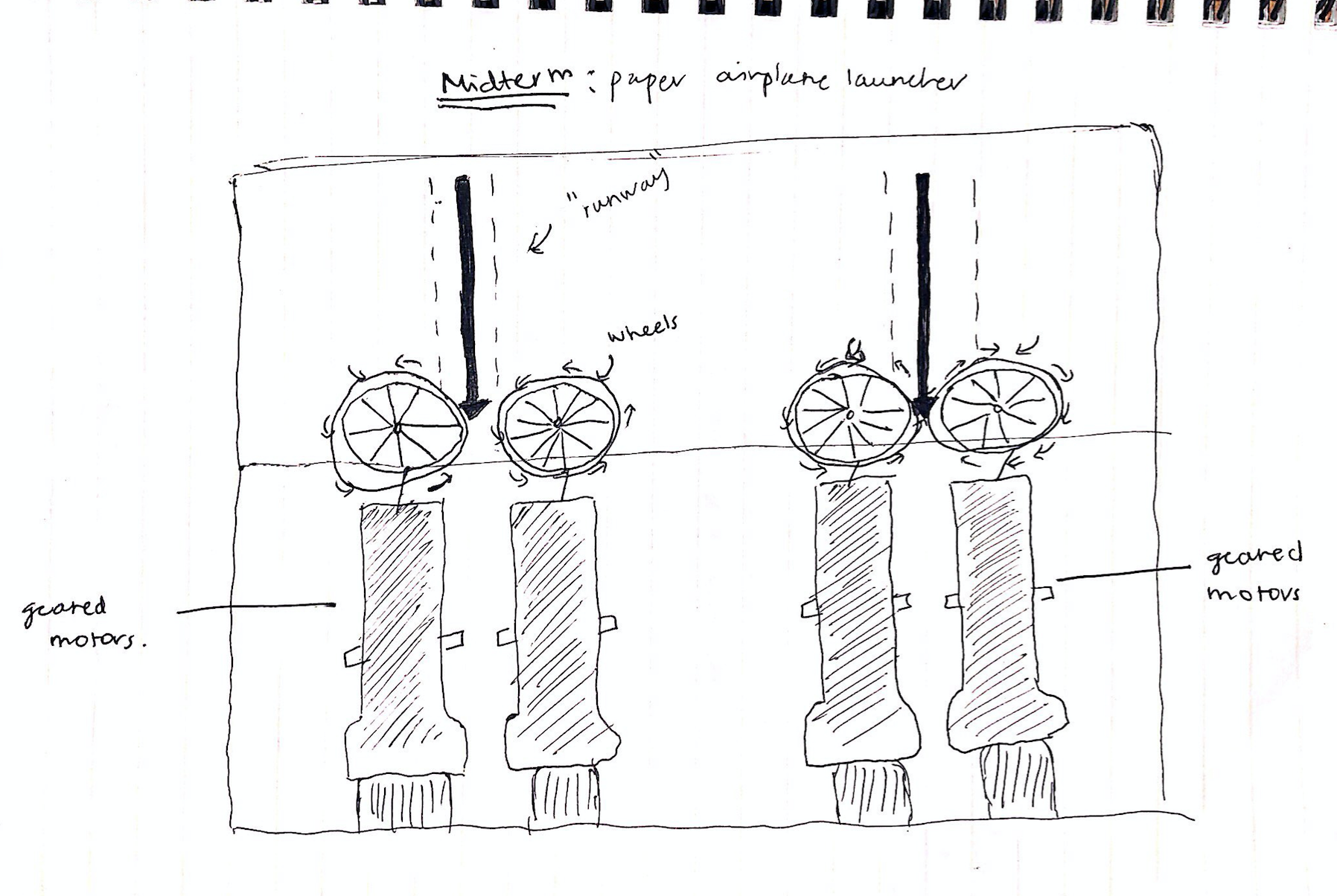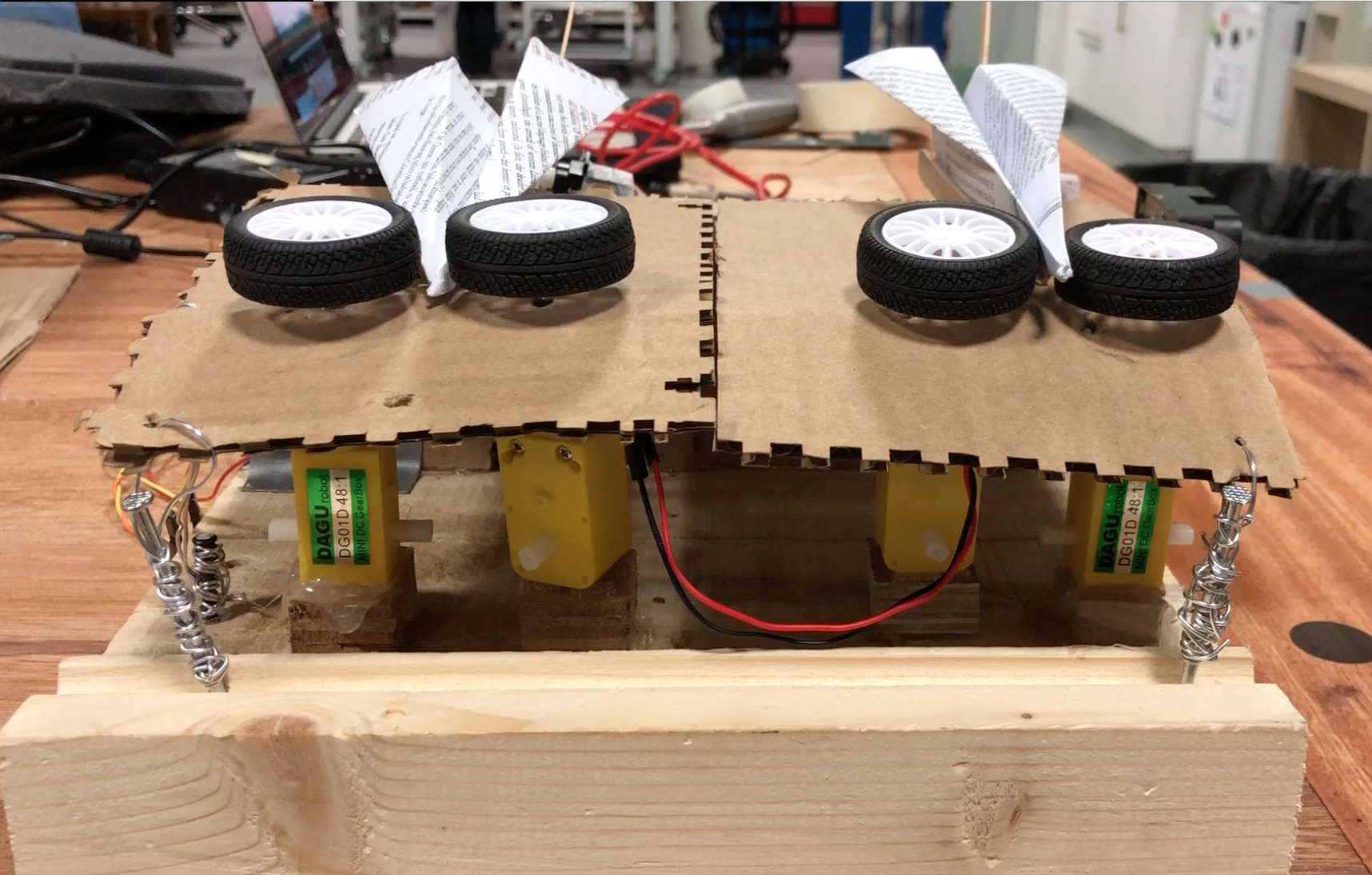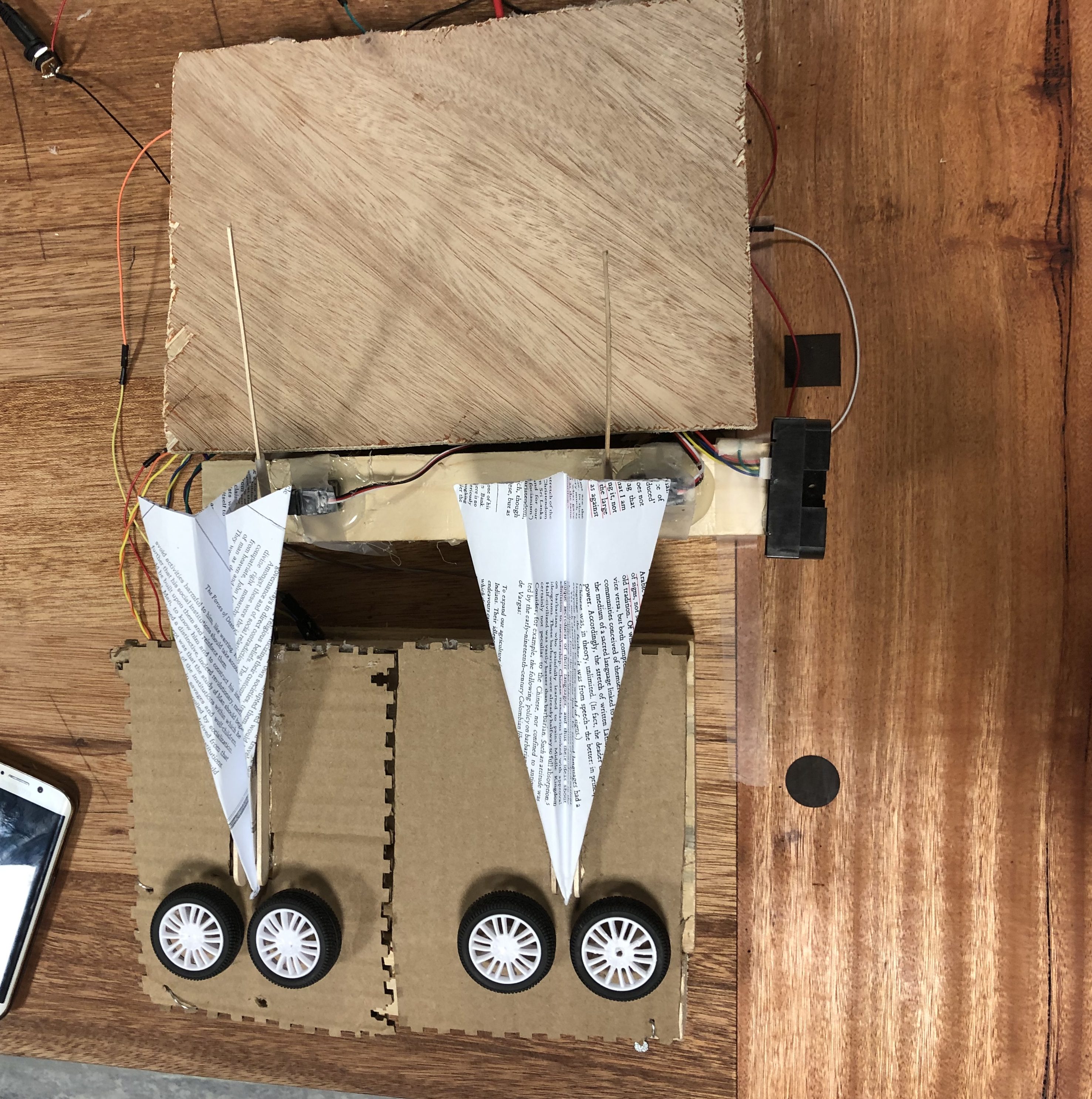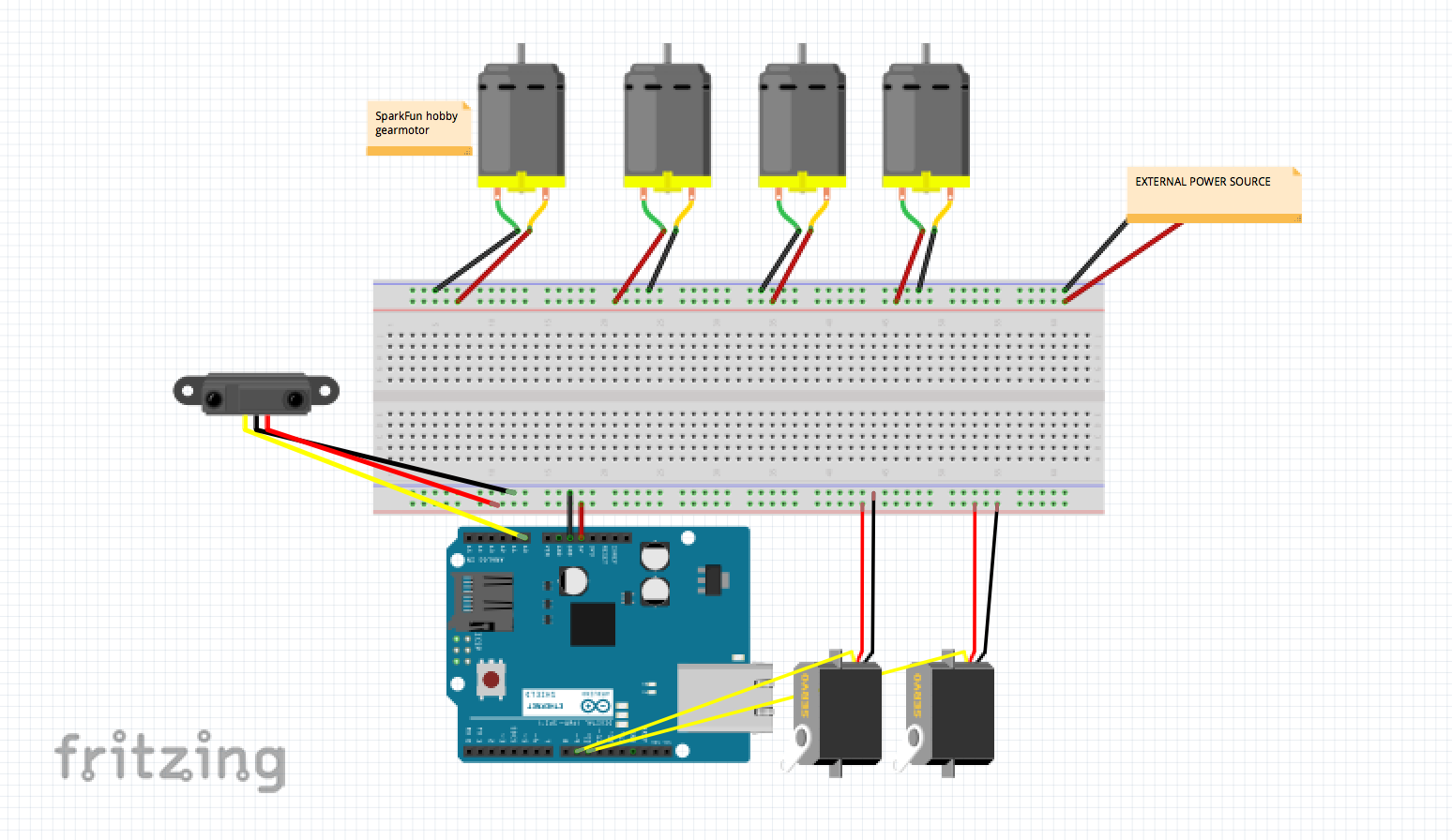For my midterm project, my initial proposal was to use sound, projection, and motors to create an installation piece. After hearing back from Aaron, I reconstructed the plan and instead used motors to create a paper airplane launcher using four geared motors, two servo motors, and an infrared distance sensor. The sensor is connected to the servo motors, which then launch the airplanes whenever the sensor detects movement.
As for the launcher’s structure, I made a platform using wood and cardboard with two wheels connected to the motors on each side, so four wheels in total. Here’s a very rough sketch of that thought process:
And here’s what it looked like:


However, I faced several challenges with making this work. Apart from the issues with wiring and code, designing the launcher proved to be really difficult. This meant having to make sure that the wheels were not too close to the cardboard, lining up the sticks for the “runway”, testing the angles for the servo motor launchers, etc. Another challenge I faced at the beginning was powering the wheels. At first, I was using regular DC motors and the issue was that they would take a while to reach full speed, and it was difficult to time them with the servo motors. As a solution to this, I used geared motors (included in the SparkFun kit), which can reach to full speed as soon as you turn them on.
Here’s a fritzing sketch I made of my circuit: 
Here’s the code:
#include <Servo.h>
float distance = 0;
Servo myservo;
Servo myservo2;
void setup()
{
Serial.begin (9600);
myservo.attach(9);
myservo2.attach(10);
}
void loop() {
//read distance
distance = analogRead(A0);
Serial.println("someone there yo");
if (distance > 600) { //close distance
Serial.println("someone there yo");
//this code moves the servo
myservo.write(70); //move servo
myservo2.write(60);
delay(50);
} else {
myservo.write(0);
myservo2.write(0);
delay(50);
}
}
Here’s a video demonstration:
The idea behind this project is to trigger the servo motors whenever a person appears in front of the sensor, thus launching the airplanes as part of a “surprise”. This means that ideally, the structure would be placed somewhere unexpected, such as at the entrance of a door for example. It also works as a paper airplane tester or racer. This would mean that you’d be able to use it to “race” two paper airplanes, using the same speed and force, to test which airplane can fly the furthest. So, ultimately, the idea behind this project was to create something playful and “surprising”, to explore different forms of interactivity, and to be able to experiment with a “game” type of interaction (the paper airplane racer). The issue with having these two different uses for the project is that with the airplane racer, I would have to change the affordances and indicators by adding a button instead of the sensor, for example. Whereas the sensor works perfectly for the surprise element.
